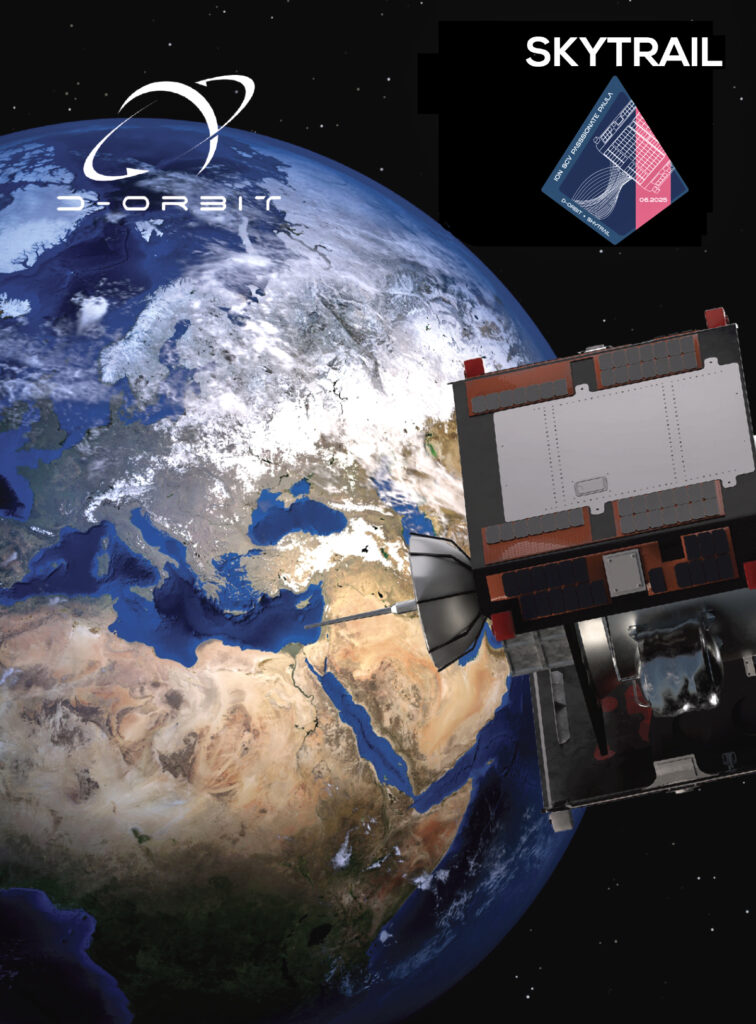
On June 23, 2025, D-Orbit launched Space Bound and Skytrail, the 18th and 19th commercial missions of ION Satellite Carrier (ION), the firm’s orbital transfer vehicle (OTV), aboard SpaceX’s Transporter-14 mission.

The two IONs were launched from Space Launch Complex 4E (SLC-4E) at Vandenberg Space Force Base in California at 02:25:00 PM PT (09:25:00 PM UTC). Following liftoff, the OTVs, ION SCV Charismatic Carlus and ION SCV Passionate Paula, were released into a Sun-synchronous Orbit (SSO) at an altitude of approximately 590 km and 510 respectively
ION Satellite Carrier is a versatile space vehicle capable of transporting and releasing satellites into distinct orbital slots and can also accommodate third-party payloads, including innovative technologies, research experiments, and instruments requiring on-orbit testing. Additionally, ION can support edge computing and space cloud services, providing satellite operators with advanced storage and computational capabilities in orbit.

The two ION vehicles carried payloads from a diverse range of commercial, institutional, and research entities. These included:
Two LEMUR 4U satellites by Spire Global: the satellites combine a Spire-built platform, and a Lacuna-built IoT gateway, expanding Lacuna Space‘s IoT constellation, which is designed to deliver low-cost, reliable global connections to sensors and mobile equipment in remote locations. The constellation supports IoT services across agriculture, environmental monitoring, smart metering, and the blue economy— with use cases ranging from measuring soil moisture to improve crop yields in remote regions to tracking the movement of critical assets.
Early Test Payload by Constellation Technologies & Operations: a regenerative 5G mmWave payload enabling low-latency, high-speed connectivity from Very Low Earth Orbit (VLEO), with initial testing and validation for future satellite operations.
PBI (Water Ion Thruster) by Pale Blue: a miniaturized gridded ion thruster delivering best-in-class total impulse per unit. Its no-high-pressure and propellant-preloaded design eliminates the need for fueling work at launch site. Fully integrated and clusterable, PBI supports a wide range of nanosats and microsats with missions that require high efficiency and reliability.
Rogue Thrusters by Magdrive: the company’s first In Orbit Demonstration of their Rogue thruster. Compact, powerful, and radically efficient, Rogue uses solid metal as its propellant, turning it into plasma to generate bursts of thrust far beyond what traditional electric systems can manage. It delivers up to 10 mN of force, enough to shift satellites with precision, last minute collision avoidance, and tackle deep-space maneuvers. Built with internal energy storage, it’s not just fast, it’s sustainable.
ROQuET—Reconfigurable lower Orbit Quantum Computer for Earth observation Technology by University of Vienna (Austria) in collaboration with CNR Milano (Italy) and the support of the German Aerospace Center in Berlin, Munich, and Trauen: a compact, energy-efficient photonic quantum computer designed to operate reliably in the harsh environment of space missions. Sized like a shoebox, it withstands thermal and mechanical shocks without the need for the controlled conditions typical of terrestrial quantum computers. This mission aims to explore the potential of quantum technologies in the context of space operations, especially for Earth observation scopes.
DNAV (Deep Space Navigation) by Telepix: an onboard processor with deep space navigation algorithm. It is a system designed for satellites to autonomously navigate and determine their position in deep space, far from Earth, independent of ground station communication. It combines a wide-angle, high-resolution camera and advanced image processing algorithms to track celestial bodies like stars and planets, thereby enabling precise calculation of the satellite’s position and velocity. To handle the data processing for this image-based navigation, the system is also equipped with TelePIX’s TetraPLEX, a high-performance onboard AI processor that was successfully space-qualified last year.
AIX-1: A project by Planetek, in collaboration with D-Orbit and AIKO, and co- funded by ESA Φ-lab’s InCubed program, AIX-1 follows the successful launch of AI-eXpress 1 Precursor (AIX-1p) in January. The project leverages cutting-edge technologies such as Artificial Intelligence (AI) and Blockchain in Space to enhance satellite capabilities in terms of reactivity, responsiveness, and low- latency data delivery. Building on the in-orbit validation of AIX-1p, AIX-1 expands the functionalities of a hybrid edge/cloud ecosystem hosted on a Low Earth Orbit (LEO) platform. The system integrates Earth observation payloads, deployable CubeSats, and a modular software framework that dynamically manages on- board sensors and computing resources.

This mission marks a further step for D-Orbit toward the development of the “satellite-as-a-service” model, bringing us closer to a fully operational space “App Store,” a new frontier for accessing, managing, and monetizing space infrastructure.
On two additional ports of the Transporter-14 mission, D-Orbit also launched four satellites from Plan-S Satellite and Space Technologies (Connecta IOT-9, -10, -11, – 12), deployed via two, NPC Spacemind CubeSat deployers. With this launch, D-Orbit has now deployed 190 payloads in orbit since the inaugural ION mission in 2020.
The launch of these two new missions further validates our ability to deliver timely, precise, and reliable orbital transportation services,” said Renato Panesi, co-founder and Chief Commercial Officer at D-Orbit. “We continue to expand our capabilities to meet the evolving needs of our customers, and these missions mark another step forward in our long-term vision for space infrastructure.”

